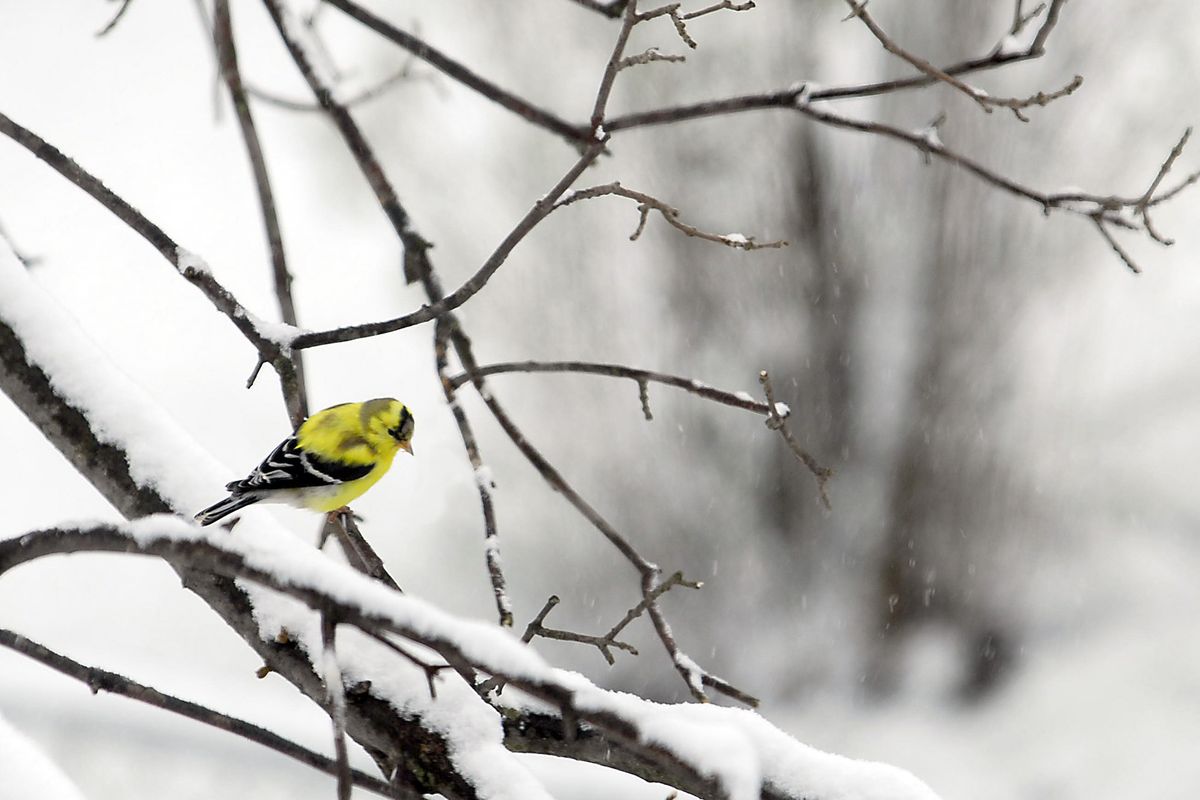Audubon Clubs invite birders to join Christmas Bird Counts

Small groups of bird watchers heading out locally this month for the 113th annual Christmas Bird Count are helping plot what appear to be significant global trends.
For example, surveys indicate the goldfinch, Washington’s state bird, may be looking northward for real estate in southern Canada while the scrub jay in Oregon may find Washington more hospitable.
Climate change has nearly 60 percent of the 305 bird species found in North America during winter on the move, said Gary Blevins, Spokane Community College biology professor.
Citing research by National Audubon Society scientists, Blevins says birds are shifting their ranges northward.
The trend could spell declines of birds in established territories, or it could mean bird watchers will be logging new species more regularly in their backyards.
Although Christmas Bird Count groups survey an area just 15 miles in diameter, they provide a snapshot of data added to the sightings from more than 2,000 circles across North America that helps scientists plot the trends.
Last year, 2,248 counts and 63,223 volunteers in all 50 states and all Canadian provinces – plus 99 count circles in Latin America, the Caribbean and the Pacific Islands – tallied more than 60 million birds.
Count leaders file their surveys of the number of birds and species online so central computers can organize the data into an impressive continent-wide picture.
Local Audubon bird-count organizers welcome newcomers to sign up for their outings scheduled for designated days between Dec. 14 and Jan. 5.
Families and students, birders and scientists armed with binoculars, bird guides and checklists will be heading out on the annual mission.
The $5 fee charged to participate in the past has been dropped this year to encourage more people to join the groups, said Jan Rose of Bonners Ferry. Rose is organizing the outing in Boundary County, where birders joined the Christmas Bird Count bandwagon about 25 years ago.
Spokane Auduboners have been participating in the count since 1916, but online records are available only back to 1999.
“We’re dropping fees, adding languages, going digital, and taking citizen science year-round,” said Audubon President and CEO David Yarnold. “This is the largest, longest-running animal census on the planet.”
“This is not just about counting birds,” said Gary Langham, Audubon’s chief scientist. “Data from the Audubon Christmas Bird Count are at the heart of hundreds of peer-reviewed scientific studies and inform decisions by the U.S. Fish and Wildlife Service, the Department of the Interior, and the EPA.
“Because birds are early indicators of environmental threats to habitats we share, this is a vital survey of North America and, increasingly, the Western Hemisphere.”
The count began in 1900 when Dr. Frank Chapman, founder of Bird-Lore, which evolved into Audubon magazine, suggested an alternative to the holiday “side hunt,” in which teams competed to see who could shoot the most small game, including birds.
Chapman proposed that people count birds instead.
More than a century later, by helping monitor shifts in wildlife populations associated with climate changes, birders can assist land management ranging from habitat modeling to farming practices, Blevins said.
“The change in range of snow geese, for example, is clearly correlated with changes in the average temperature slopes,” he said.